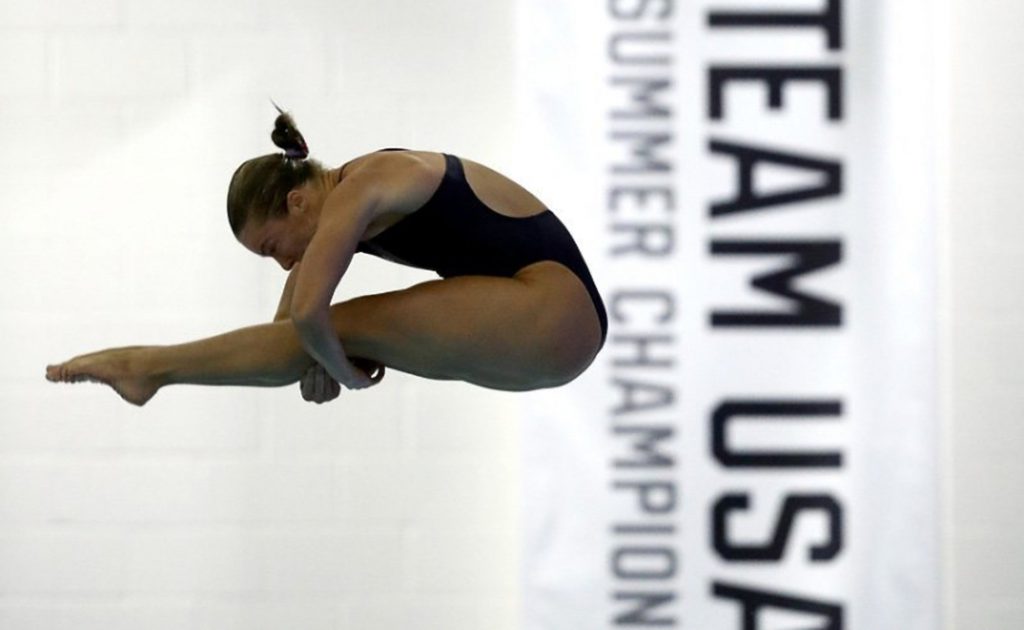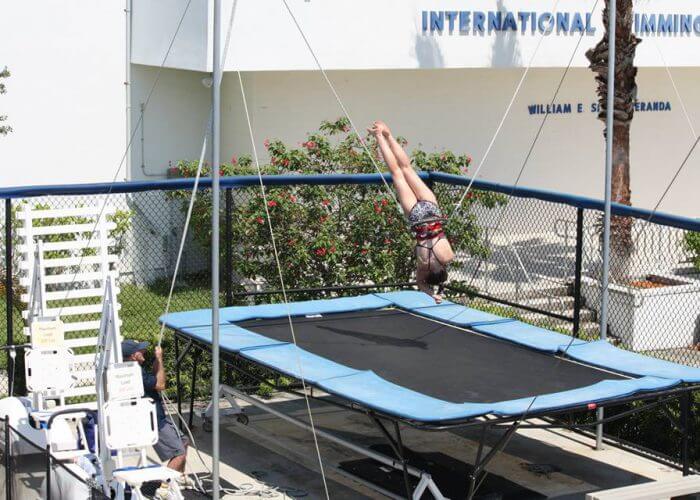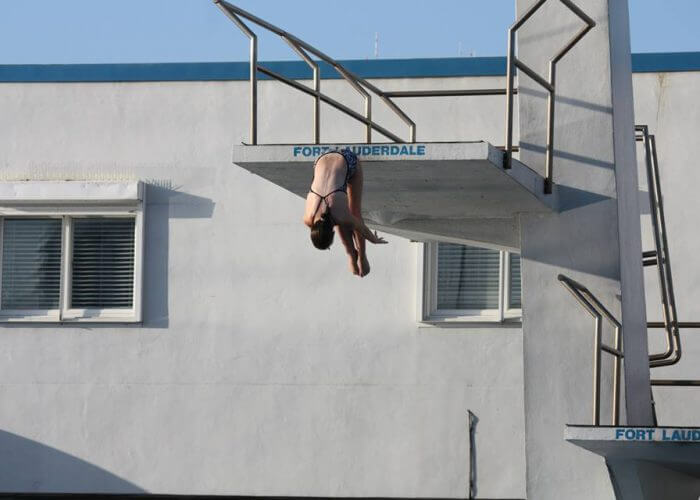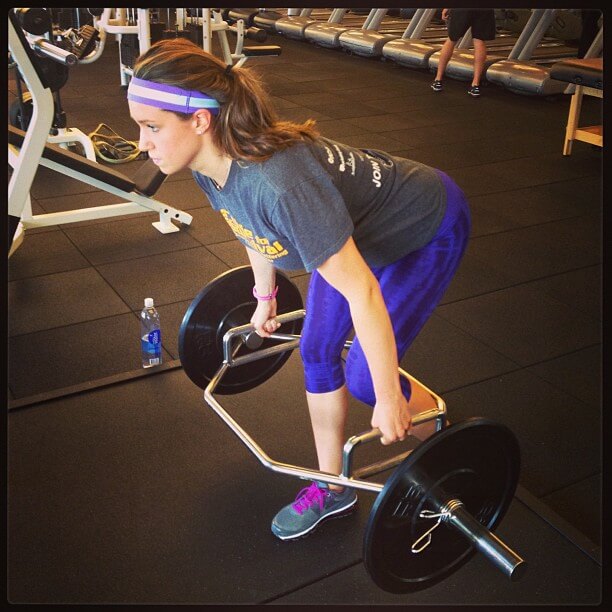What A Diving Practice Is Really Like

By Erin Keaveny, Swimming World Contributor.
Have you ever wondered what a diving practice is like? Diving is a sport that many people watch and assume practice is all about jumping off a board and seeing how many flips you can do, or bouncing up and down for a little before heading home. But, diving practices are a lot more structured than that.
Most practices start with stretching, and some dryland as a warm up. It is common for divers to have sets of tuck-ups, pike-ups, squats, lunges, leg-lifts, calf-raises, and other core or lower body exercises as part of warm up. This part of practice might also include work on a dry board, trampoline, or in belts, depending on access to that equipment.
Divers, like gymnasts, need to be strong and flexible, powerful and graceful, something warm up reflects.

Photo Courtesy: Erin Keaveny
Once it is time to get in the water, most practices start with some line-ups or drills. This can include jumps, standing dives, double-bouncing drills, and other basic movements. Starting practice in the water like this is a good way to focus on basics, and prepare for the rest of practice. It can also be helpful for adjusting to the boards if the practice takes place in an unfamiliar pool.

Photo Courtesy: Erin Keaveny
After that, it is time to really start. The main part of practice can be different based off of when it takes place during the competition season. In an off season practice, a coach might decide to dedicate a good portion of it to drills, or learning one new dive. During competition season, divers are more likely to practice each of the dives in their meet list multiple times.
Another part of a full training regimen for a divers, outside of the pool, is strength and conditioning. While many divers don’t add lifting to their practice schedule until college, strength training can make a hug difference for a diver.

Photo Courtesy: Todd Anderson
Working on core strength can increase dive control, and help to keep entries clean and consistent. Lower body strength assists divers in their front and back approaches. And, like most sports, overall strength often leads to overall improvement.
All diving training and instruction should be performed under the supervision of a qualified coach or instructor, and in circumstances that ensure the safety of participants.



